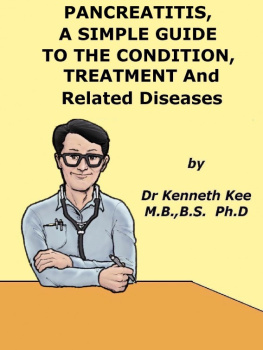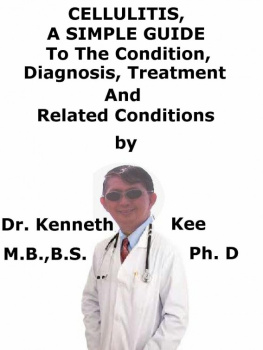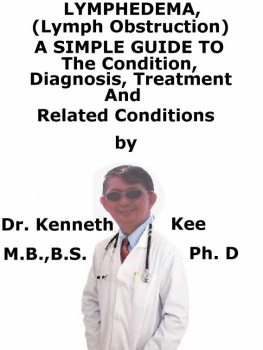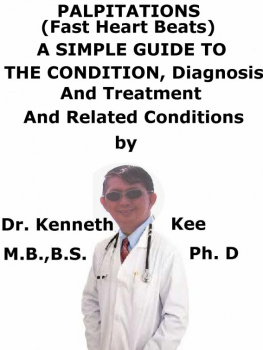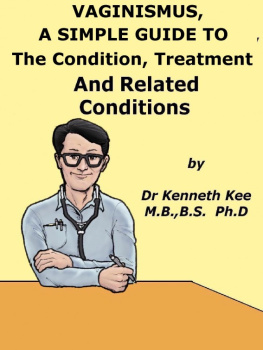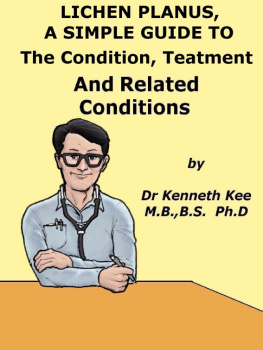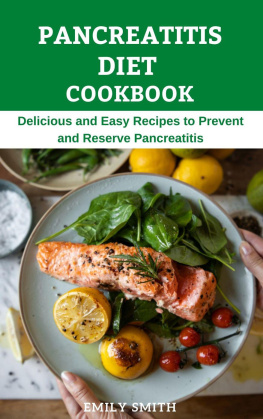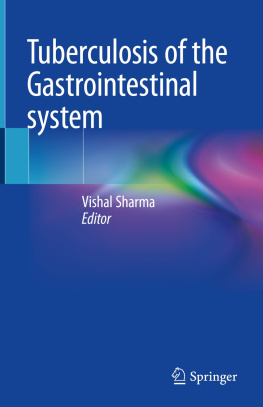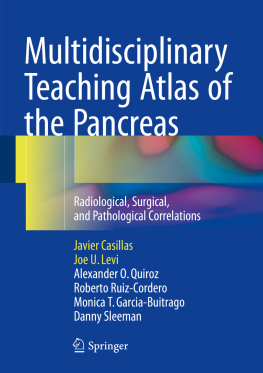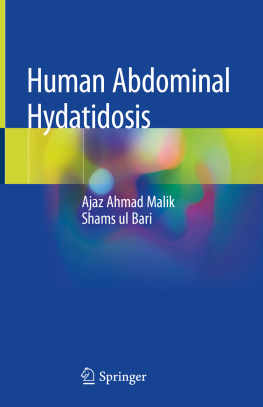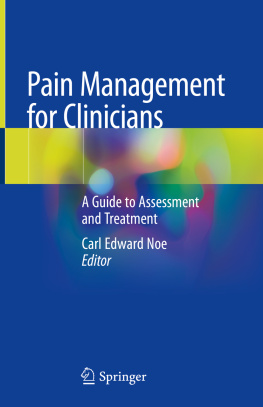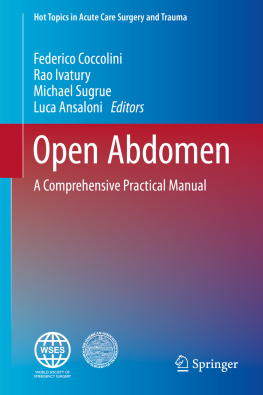Pancreatitis
A
Simple
Guide
To
Condition,
Treatment
And
Related Diseases
by
Dr Kenneth Kee
M.B.,B.S. (Singapore)
Ph.D (Healthcare Administration)
Copyright Kenneth Kee 2014 SmashwordsEdition
Published By Kenneth Kee atSmashwords.com
Dedication
This book is dedicated
To my wife Dorothy
And my children
Carolyn, Grace
And Kelvin
This book describes the disease Pancreatitisand Its Treatments and Related Diseases or in vernacular terms
(What You Need to treat Pancreatitis)
This eBook is licensed for the personalenjoyment only. This eBook may not be re-sold or given away toother people. If you would like to share this book with anotherperson, please purchase an additional copy for each reader.
If youre reading this book and did notpurchase it, or it was not purchased for your use only, then pleasereturn to Smashwords.com and purchase your own copy.
Thank you for respecting the hard work ofthis author.
Introduction
Ode to Pancreatitis Pancreatitis is an acute or chronic pancreasinflammation Chronic disease follows attacks of acutepancreas infection The presence of gallstone is the most commoncause of pancreatitis Small gallstone blocked the bile duct causingpancreatic necrosis Patients present with epigastric abdominalpain aggravated by eating There may be also abdominal distension,nausea and vomiting There may be mild fever, shock andhypotension There may also abdominal tenderness anddistension Diagnosis is by high blood levels of lipaseand amylase An ultrasound scan may be done to look forpseudocyst in pancreas Complications are damage to the pancreas orkidney function There are also shortness of breath and poorfood absorption Treatment is immediate hospital treatment andadmission Pain management, nutritional support and IVhydration Analgesic or antispasmodic medicine usuallyby injection Most pancreatitis patients have completeresolution -An original poem by Kenneth Kee Interesting Tips about the Pancreatitis A Healthy Lifestyle 1. Take a well Balanced Diet 2. Treatment of Acute Pancreatitis: a.
Admission to hospital b. Gastric suction and fluid replacement c. Analgesic or antispasmodic medicineusually by injection d. Antibiotics for infections e. Treat biliary tract diseases andalcoholism f. Surgical drainage of pseudocysts afteracute episode.
Chronic Pancreatitis: a. Pancreatic extracts and enzymes togetherwith meals b. Sodium bicarbonate and cimetidine toprevent enzymes breakdown c. Analgesic or antispasmodic medicineusually by injection d. Surgical procedures usuallyunsuccessful 3. Keep bones and body strong Bone marrow produces our blood Eat foods rich in calcium like yogurt,cheese, milk, and dark green vegetables.
Eat foods rich in Vitamin D, like eggs, fattyfish, cereal, and fortified milk. Eat food rich in Vitamins B and C such asgreen vegetables and fruits Zinc and other minerals are important to thebody 4. Get enough rest and Sleep Avoid stress and tension 5. Exercise and stay active. It is best to do weight-bearing exercise suchas walking, jogging, stair climbing, dancing, or lifting weightsfor 2 hours a week. One way to do this is to be active 30 minutesa day at least 5 days a week.
Begin slowly especially if a person has notbeen active. 6. Do not drink more than 2 alcohol drinks aday for a man or 1 alcohol drink a day for a woman. Alcohol use also increases the chance offalling and breaking a bone. Alcohol can affect the neurons and braincells. 7.
Stop or do not begin smoking. It also interferes with blood supply andhealing.
Chapter 1
Pancreatitis What is Pancreatitis? Pancreatitis is an acute or chronicinflammation of the pancreas. What is the cause of Pancreatitis? Pancreatitis is usually caused by thefollowing: 1. Alcoholism and diseases of the biliarytract 2. Bacterial infections from salmonella typhiand streptococcus 3.
Viral infection especially mumps,coxsackie virus, cytomegalovirus 4. Trauma Chronic disease follows attacks of acuteinfection. What are the symptoms of Pancreatitis? Person who has Acute Pancreatitis has thefollowing symptoms: 1. Acute onset of abdominal pain startingfrom the epigastrium, radiating to the back in 50% of cases. 2. Pain usually very severe occurring after alarge meal or drinking bout 3.
Pain is worse lying supine thereforepatients sit or lean forward 4. Mild fever and body aches 5. Nausea and vomiting 6. Hypotension followed by clinical shock Signs: 1. Tenderness at the epigastrium with musclespasm 2. Distension and diminished bowel sounds 3.
Pleural effusion 10%, abdominal mass 20%,ascites 20% 4. Acute renal failure, respiratory failurefollowing shock. Chronic Pancreatitis Symptoms: 1. Repeated attacks of epigastric abdominalpain 2. Pain worse after eating, radiates to theback 3. Weight loss 4.
Fever Signs: 1. Abdominal tenderness 2. Abdominal mass may suggest swelling andpseudocysts 3. Tender subcutaneous masses seen indicatingfat necrosis How is the diagnosis of Pancreatitismade? Diagnosis can usually be made by: 1. Physical examination with tenderness inthe epigastrium 2. Serum and urine amylase very high after 6hours 3.
White blood cell count high 4. Serum lipase high in 50% patients 5. Blood calcium may be low 6. Blood glucose tolerance test fordiabetes 7. Ultrasound may show up the presence ofpseudocyst in pancreas 8. CAT scan and MRI may show swelling andpseudocysts in pancreas What are the complications ofPancreatitis? 1.
Pseudocysts from damage to pancreatictissues 2. Hemorrhage - bleeding due to damage to theblood vessels in pancreas 3. Peritonitis from rupture of pseudocystsand bleeding 4. Diabetes mellitus from damage to theglands in the pancreas producing insulin What is the treatment of Pancreatitis? Acute Pancreatitis: 1. Admission to hospital 2. Gastric suction and fluid replacement 3.
Analgesic or antispasmodic medicineusually by injection 4. Antibiotics for infections 5. Treat biliary tract diseases andalcoholism 6. Surgical drainage of pseudocysts afteracute episode. Chronic Pancreatitis: 1. Pancreatic extracts and enzymes togetherwith meals 2.
Sodium bicarbonate and cimetidine toprevent enzymes breakdown 3. Analgesic or antispasmodic medicineusually by injection 4. Surgical procedures usuallyunsuccessful What is the prognosis of Pancreatitis? Prognosis is usually good after treatment ofacute pancreatitis with recovery in 5-7 days. Hemorrhagic Pancreatitis has high mortalityof 50-90% Most trauma cases has complete resolution Some alcoholic pancreatitis may go on tochronic pancreatitis. Chronic pancreatitis relapses frequently Rupture of pseudo cysts may result indeath
Chapter 2
Digestion Process Digestion is the breakdown of food intosmaller components that can be more easily absorbed and assimilatedby the body. These smaller substances are absorbed throughthe small intestine into the blood stream.
Digestion is a form of catabolism that isoften divided into two processes based on how food is broken down:mechanical and chemical digestion. a. Mechanical digestion refers to thephysical breakdown of large pieces of food into smaller pieceswhich can subsequently be accessed by digestive enzymes. b. Chemical digestion, Enzymes break down food into the smallmolecules the body can use. In the human digestive system, food entersthe mouth and mechanical digestion of the food starts by the actionof mastication a form of mechanical digestion and the wettingcontact of saliva.

